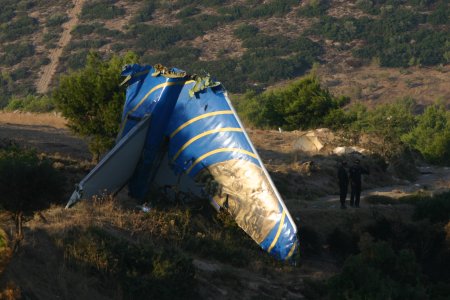Flight International online news 10:00GMT: As investigators focus on depressurisation as a factor in the fatal Helios Airways crash in Greece on 14 August, the US Navy is about to make affordable hypoxia awareness training equipment available to replace costly decompression-chamber simulations.

A lack of similar systems is believed to have been instrumental in the Helios Airways crash where the pilots were unable to recognise the symptoms associated with the onset of hypoxia – low blood oxygen levels – which occurs in the event of depressurisation or failure to pressurise.
Demonstrating the equipment at last week’s Bombardier Safety Standdown seminar in Wichita, Kansas, the US Navy’s Capt Donna Murdock showed nearly 500 delegates what happens as a pilot carries out tasks on a PC-based flight simulator while being fed air at ground-level pressure, but with a reduced proportion of oxygen in it to simulate high-altitude conditions.
The equipment, known as a reduced oxygen breathing device (ROBD), controls the percentage of oxygen in the air supplied to a pilot wearing a face mask.
Air is around 21% oxygen, 78% nitrogen and 1% other gases, but the ROBD can control the proportion of oxygen in the air supplied to the mask to simulate the degenerative cognitive and physical co-ordination effects on pilots of the reduced partial pressure of oxygen at any altitude.
The ROBD can also measure pilots’ blood oxygen levels and heart rate while they are given tasks, which could include using a joystick and desktop computer running a flight-simulator programme. Murdock demonstrated how this can be videoed and shown to pilots after their training so they can see how easy it is to lose the ability to make decisions before they realise they have a hypoxia problem and – in the real case – don their cockpit oxygen masks to counteract the danger.
The equipment is produced under licence from the US Navy by Connecticut-based Environics, at a unit cost of about $26,000.
Other fatal crashes caused by pressurisation failure followed by hypoxia include a Beech Super King Air in Australia in 2000, and a Bombardier Learjet 35 (with golfer Payne Stewart on board) in the USA in 1999.
DAVID LEARMOUNT/WICHITA
Source: Flight International



















